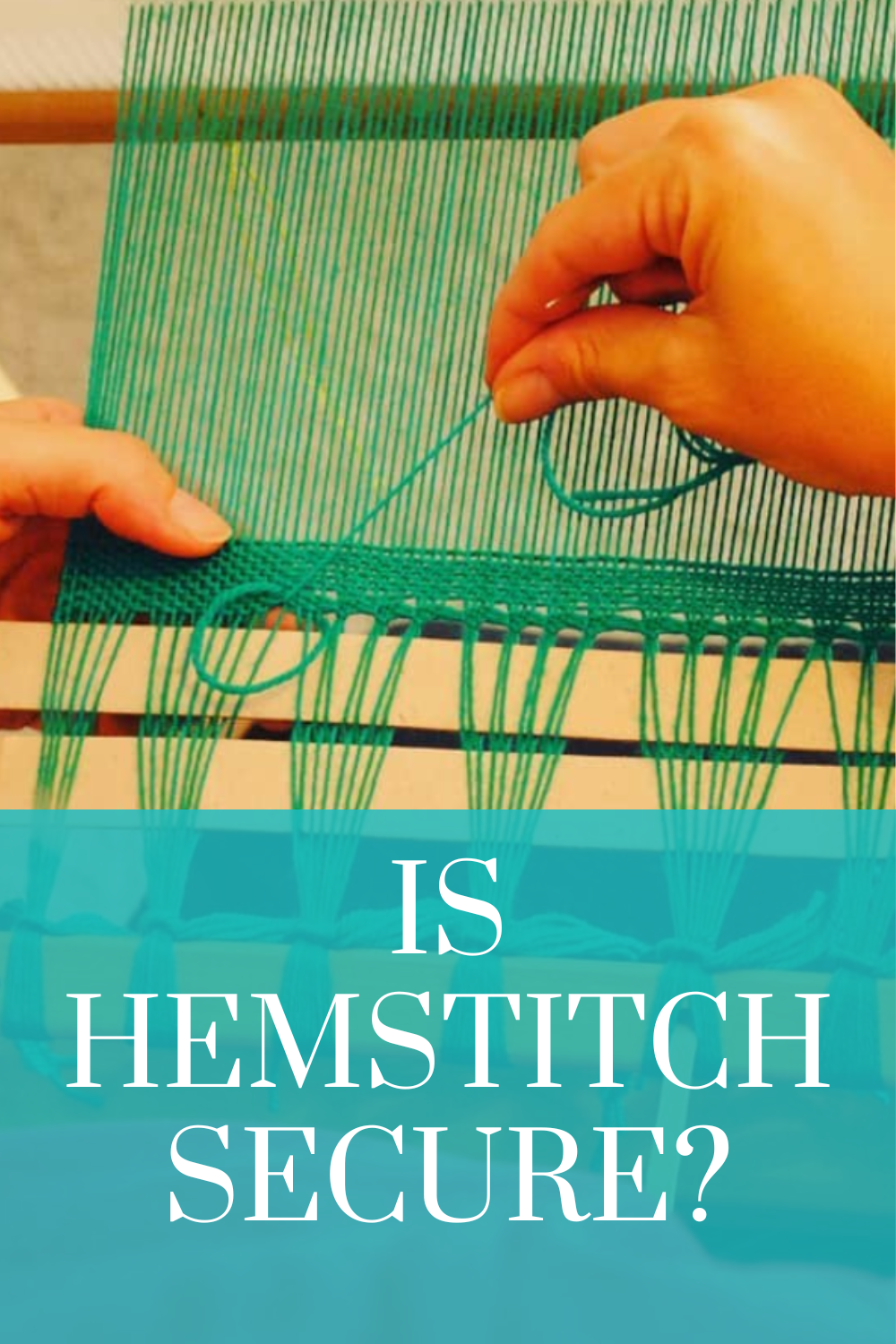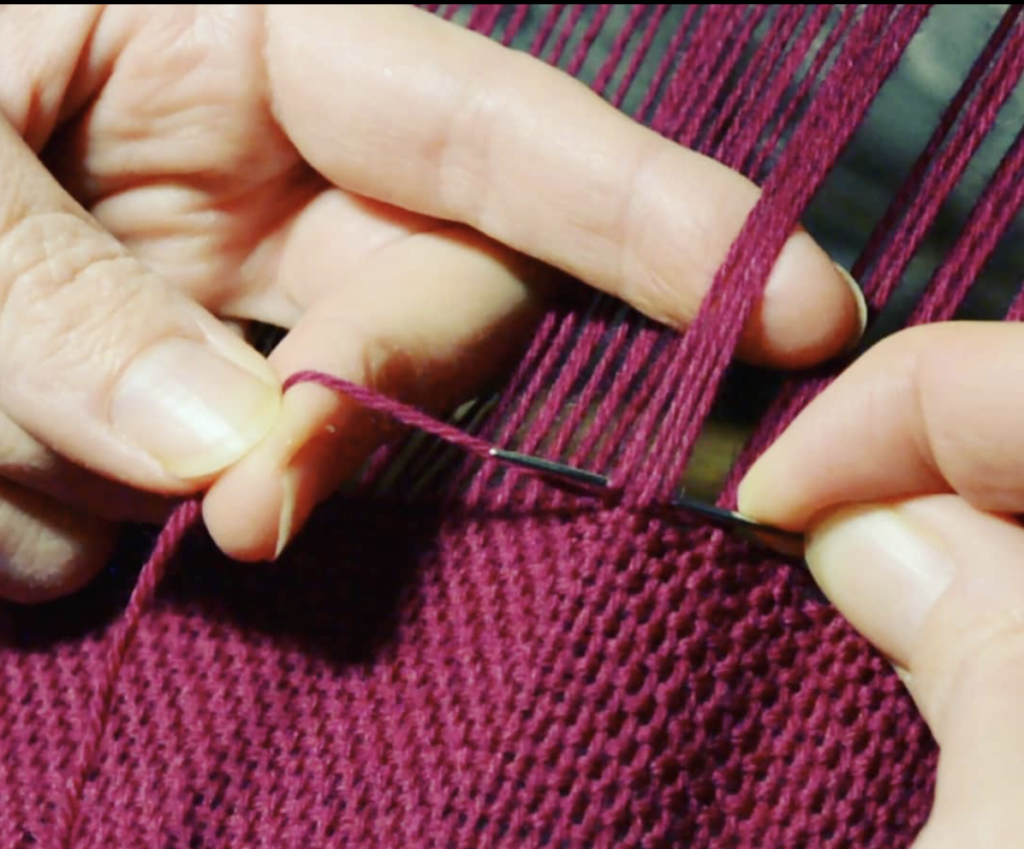Hemstitching must be one of my favourite topics to discuss.
Why?
Because I love things that are both beautiful and functional, and hemstitching fits that bill perfectly. I just think it’s a glorious way to finish a woven piece when you want to maintain a fringe.
Personally, I think the hemstitch is an essential for any weaver’s skill library.
And the good news is, you really only need a tapestry needle to do it. Plus (and this is a big bonus, in my opinion!) you can hemstitch the piece while it’s on the loom.
This means that when you remove the piece from the loom, it’s secure and the ends are finished!
Oh, and in addition to the benefits already mentioned, almost any yarn used in a woven project is suitable for hemstitching.
*This post contains affiliate links. For further information, please see my disclosure policy.
If you are looking for resources on learning to hemstitch, I have a lot of those. Make sure you read to the end of the article to find extra helpful links.
This week’s Ask Kelly question is related to hemstitching. It’s a great question and the answer is important to know:
“When you do the hem stitch on the edge of the weaving can you cut the warp and wear it without it coming adrift or do you have to weave the ends buck up into the fabric, for extra security?
So far I have done the hem stitch but then gone over it with the sewing machine and/ or added bias binding for necklines etc.
I’m thinking this may be unnecessary overkill.”
Leonie
If you’re using hemstitch and then having a fringe, it is fine to just hemstitch and then not do any further fringe treatment and you don’t need to further stitch over the ends. However, you do want to leave some length for fringe. If you cut too close to the hemstitch because you don’t want a fringe, then the hemstitch will unravel.
I have found hemstitching to be extremely reliable as a way to secure edges, again, as long as that fringe is present and not cut too close to your hemstitched knots.
If you are hemstitching but don’t want a fringe, you can always, as you suggested, weave the ends in.
Also, I generally only use hemstitching for fringed or sometimes for tapestry etc where I weave the ends back in. If I want to use the fabric to sew with then I serge the raw edges. With a sewing machine, you could do a double row of zig zag stitch to secure edges.
OK, now let’s have a look at those extra hemstitch resources I mentioned before:
Hemstitch as a feature (member’s only class)
Until next time…
Happy Weaving!




Thanks for this article Kelly, it’s a question I’ve always wondered about too. . I always hemstitch but have never trusted it on its own with fringes, so I have always knotted the fringes as well if I wasn’t twisting them. I’m in the middle of a scarf for myself at the moment so I am going to leave the fringes just hemstitched and see how they go.
I’m glad the article came at the right time for you Jacky 😀
I watched hemstitch as a feature ( love this idea) and have one question how do you secure the ribbon or other items added to the weaving?
I just weave the ends in like I would for any yarn, but if you need the ribbon to be more secure, you can place a couple of small stitches at the ends of the folded over ribbon to help it stay in place.
I always use hemstitching on both ends of my weaving, because I don’t have a sewing machine or a serger. When I don’t make fringe, I use only 3-4 ends per hemstitched bundle, cut the ends quite short and cover them by sewing a hem or a felled seam or making a lining. The hemstitching ensures that the weaving doesn’t unravel before I get the finishing done. I’ve never had an issue with the short ends after finishing, not even on hemmed towels that I wash and dry by machine.
It would of course be quicker to use a machine to secure the ends, but I enjoy hand-sewing.